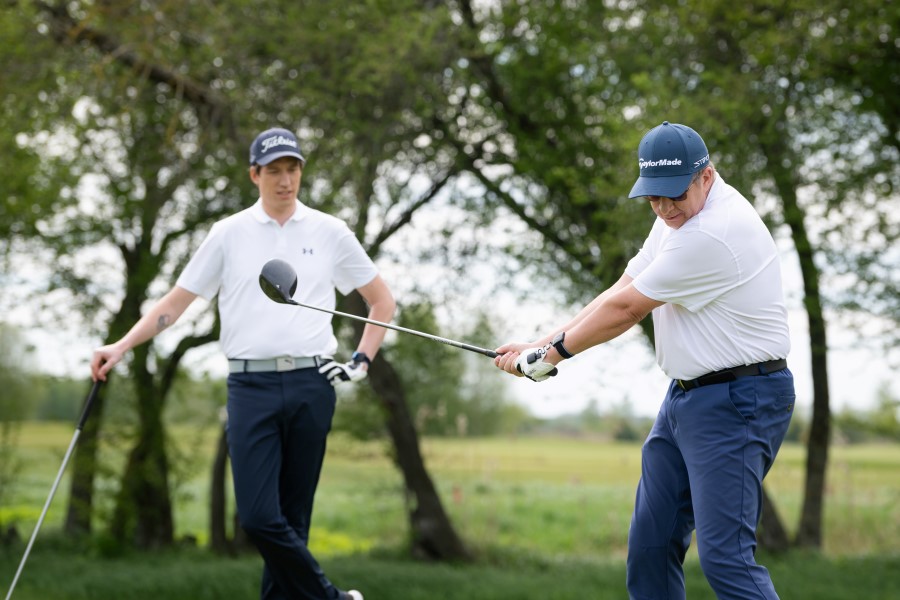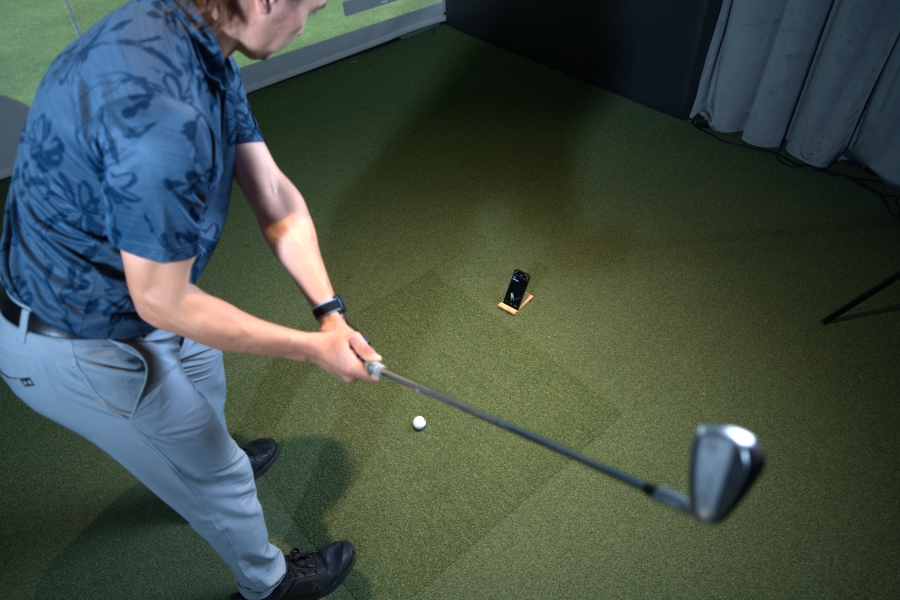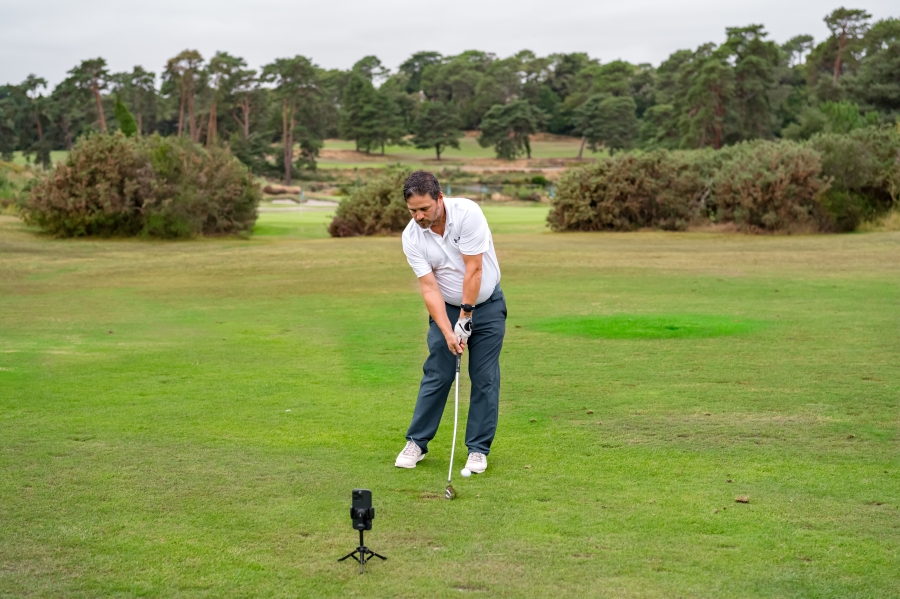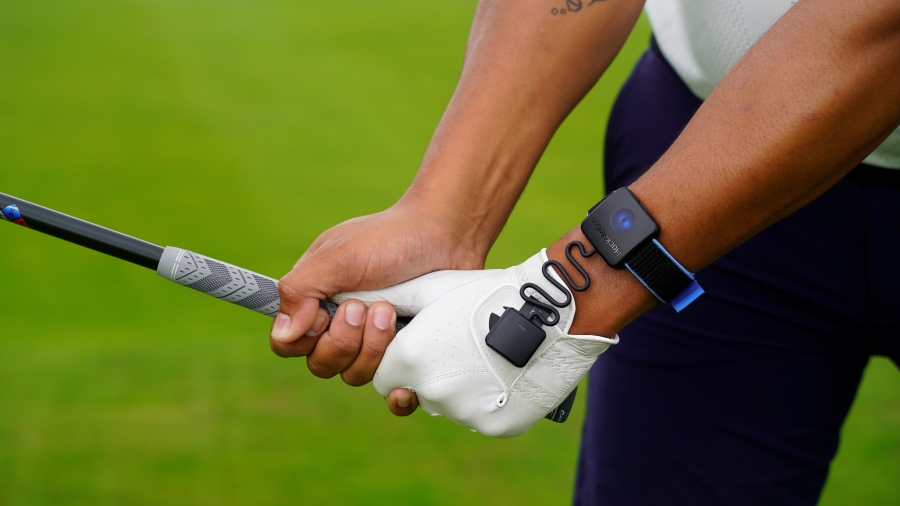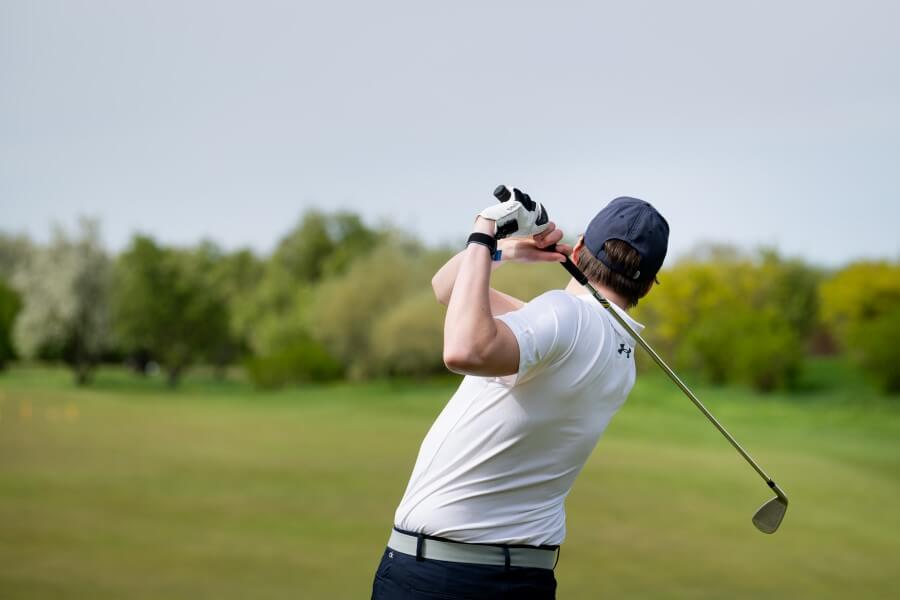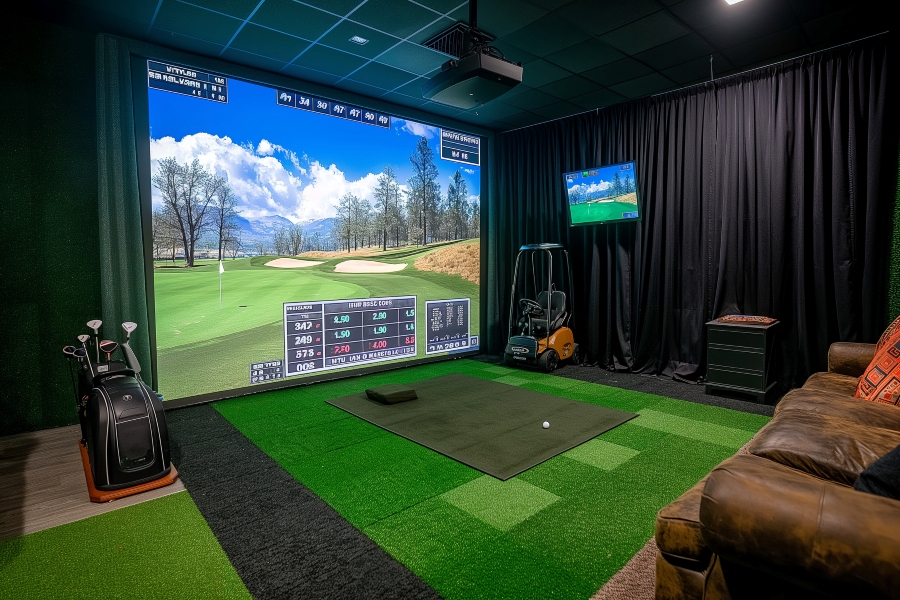When to Switch to Blade Irons: What to Know & Key Signs You’re Ready to Upgrade
Have you been tempted to switch to a pure, buttery blade so you can strike the ball with the look, sound, and feel of a Tour pro?
You’re not alone.
Many amateur golfers dream of playing blade-style irons, but making the switch isn’t always the right move. In some cases, it could hurt your game more than help it.
In this article, we’ll break down what handicap range suits blades, when it might make sense to upgrade, and most importantly, whether you’re truly ready to start playing with blade-style irons.
Switching to Blades (Key Takeaways)
If you don’t have time to read through this entire article, here are the most important tips to take away about when you should switch to blades in golf.
- Make sure your golf swing is consistent enough that you hit the center of the face more often than not.
- Check your wrist position at impact and make sure it is in a flexed position as opposed to an extended position.
- Switch to blade irons when you are getting strong distance with your irons; giving up a few yards won’t hurt you.
- If your game is ready for you to start controlling the majority of your shots (fade, draw, etc.), then a blade-style iron will help.
Contents
Factors to Consider Before Switching to Blade Irons
Getting fitted for golf irons will provide you with valuable information about the blade-style iron and whether it will suit your game.
However, going into that fitting with some understanding of what blade irons help with and where they could hurt is quite important. Blade irons will impact everything from distance to feel to ball flight.
Here’s what you need to keep in mind:
Current Distances and Desired Distances
Take a look at how far you are currently hitting your golf shots with your irons and how far you want to be hitting it with your new irons.
For the most part, blade irons do not travel as far as cavity back irons. There are two reasons for this.
- The lofts are typically weaker on the blade irons to allow for more control, higher lofted shots, and precision.
- The blade irons are less forgiving; if you miss the center of the clubface, even just a little bit, the shot will not fly as far.
The bottom line is that if distance is a concern for you, it’s likely not the time to switch to blades.
Accuracy
Blade irons are highly accurate and workable if struck well. Modern blade-style irons do offer a touch more forgiveness than the blades of the past, but they’re not designed to mask swing flaws the way cavity backs or game improvement irons can.
Take your current irons and aim at a 150-yard target. How often do you hit the green?
If your strike pattern isn’t consistent with forgiving irons, don’t expect blades to bail you out. In fact, you should expect your accuracy to drop when switching to blades.
Impact Position
Take a close look at your impact position.
We know from studying more than 1,000,000 swings with the HackMotion that the lead wrist must be in a flexed position at impact to hit consistent and solid golf shots.
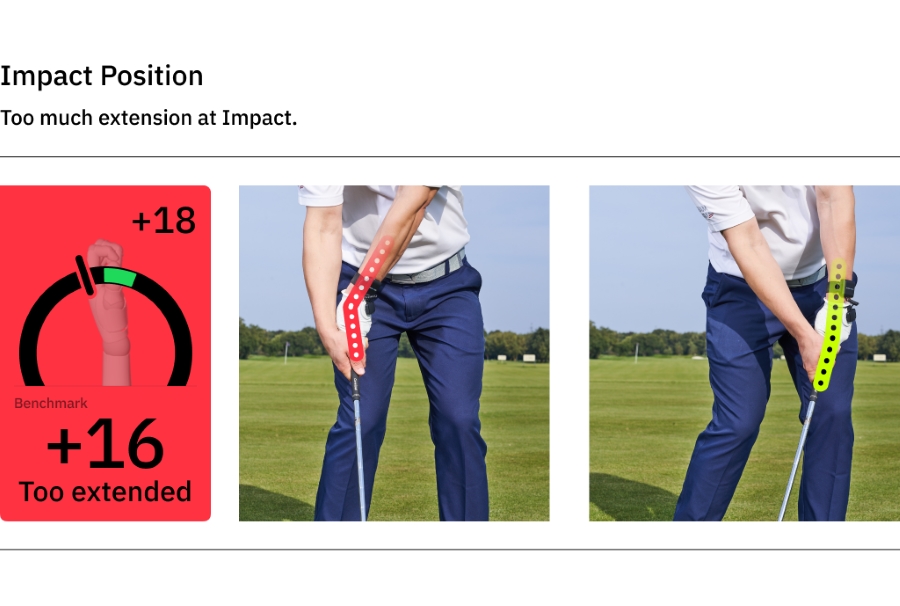
For golfers who are unable to achieve this impact position, blades will not make the game easier.
Wear the HackMotion and use some of the swing diagnostics features to check on your impact position. You’ll want to see a pattern in your wrist action in the swing that includes:
- No increase in lead wrist extension from setup to the top of the backswing.
- A decrease in extension from the top down to the ball.
- A flexed lead wrist at impact.
Continuing to work on this pattern and narrowing down that impact position will help you get into a set of blades sooner rather than later.
Handicap and Playing Goals
Typically, lower handicap golfers switch to blade irons. In the past, we may have suggested that golfers with a handicap of less than 10 would benefit from blades.
However, this is changing.
There have been so many new advancements in technology, especially in the players’ distance irons, that there may be less of a need for those in the 5 to 10 handicap range to make the switch to blades. These players get more distance, a bit more forgiveness, and great feel without having to switch.
Once golfers reach a 5 handicap or lower, the blade becomes more sensible.
There are still plenty of scratch golfers who can recognize their weaknesses and decide that blade irons are not for their game.
Budget
The higher your budget, the easier it is to afford blades. Blade irons are typically more expensive due to the manufacturing process they undergo. There are fewer options to choose from, and pricing is higher.
To get a great set of blade irons, you are likely looking at $1000 or more.
What Handicap Golfer Should Be Using Blade Style Irons?
Blade style irons reward precision but punish inconsistency. That’s why your current handicap and ball-striking ability should play a major role in your decision.
Generally, the lower your handicap, the more likely you are to benefit from the feel and feedback of blades. But even then, you’ll need to commit to refining your mechanics, particularly your impact position.
Here’s a quick guide:
| Handicap Range | Blade Iron Fit | What to Focus On |
|---|---|---|
| 0 to +5 (Scratch/Plus) | Ideal fit | Shot shaping, control, dialing in strike |
| 6–10 | Possible fit | Improve wrist angles & face control |
| 11–15 | Not ideal yet | Work on low point & center strike drills |
| 16+ | Poor fit | Maximize consistency with forgiving irons |
If you’re aiming to move into blades, spend time on ball striking drills and use tools like HackMotion to train your wrist angles at impact. That’s where true consistency with blades starts to develop.
What are the Advantages of Blade Irons?
Blade style irons aren’t for everyone, but for skilled ball strikers, they offer distinct benefits that are hard to give up once experienced:
- Precision feedback: You’ll instantly feel where the ball strikes the face, ideal for refining your swing and dialing in control.
- Shot shaping: Blades make it easier to hit draws, fades, and low or high shots. Many game improvement irons limit that workability.
- Compact shape: With a thinner topline and smaller head, blades offer a clean, classic look that appeals to purists.
- Distance control: Especially with short irons, the consistent weighting and design lead to more reliable yardages.
- Cleaner turf interaction: The sleek sole often glides more smoothly through the turf, rewarding precise ball-first contact.
- Looks that inspire confidence: Even if your game isn’t quite there yet, it’s easy to be drawn to the sleek, no-nonsense design of a blade.
- Built-in accountability: Blades won’t mask poor swings, which can help committed golfers improve faster if they’re willing to embrace the challenge.
Drills to Hit Blade Irons Well
If you are determined to get blade irons and keep them in the bag, here are a few drills you can use to improve your ball striking with the blades.
Motorcycle Drill
This drill will help you feel moving from extension to flexion at the top of the backswing. If you can learn this movement, your impact position will be more consistent and reliable.
Motorcycle Drill – Step by Step
- Set Up: Address the ball as usual.
- Downswing Flexion: As you begin your downswing, gradually add wrist flexion so that by the time the club is parallel to the ground (P6), you’ve achieved your desired wrist bend.
- Continue to Impact: Maintain that flexion into impact, then release naturally through the finish.
- Experiment with Speed: Start slowly, then increase speed while retaining proper angles.
- Practice hitting golf balls while also working on this drill by completing the motion without actually hitting shots.
- Find your “just right” amount of flexion—too little or too much can cause mishits.
Hit Hard, Stop Quick Drill
This drill is designed to improve contact consistency by helping you control your low point, compress the ball, and maintain structure through impact.
It’s one of the best full-swing drills for training dynamic control and clean contact.
- Video Timestamp: 4:37
Hit Hard, Stop Quick Drill – Step by Step
- Set Up: Address the ball with your normal setup. If you’re using a hitting mat, use the end of the mat as your stopping reference point.
- Full Backswing: Make a full backswing just like you would for a normal shot.
- Hit Hard: Swing down and strike the ball with intent—don’t hold back.
- Stop Quick: Try to stop the club as soon as possible after impact. Keep your arms straight and weight forward to stabilize the clubface.
- Check the Result: If your follow-through wraps around your body or you lose balance, it means you’re not yet in control through impact.
- Scale as Needed: Start slow with “Hit Medium, Stop Quick,” then build up to full-speed swings while maintaining that quick stop intention.
Line Drill
This drill improves your ability to control the low point of your swing, one of the most important skills for clean, consistent ball striking.
Line Drill – Step by Step
- Create a Line: If you’re on grass, spray or draw a straight line on the turf. Place the ball directly on that line. On a mat, use a folded towel 6–10 inches behind the ball as a contact barrier.
- Set Up Normally: Address the ball with your regular stance and setup.
- Focus on Contact: Make a swing with the goal of striking the ground just after the line (or missing the towel entirely). This simulates proper ball-first, turf-second contact.
- Keep Weight Forward: As you swing, shift and keep about 90% of your weight on your lead side to promote a forward low point.
- Train Wrist Angles: Use HackMotion to monitor your lead wrist. At setup, you may have 10–15° of extension. Through impact, reduce that extension or move into flexion to maintain shaft lean and avoid early flipping.
- Add the P5 Variation (Optional): Pause when your lead arm is parallel to the ground in the downswing (P5). From that position, hit punch shots focusing on maintaining lead wrist flexion into impact.
FAQs
Why switch to blade irons in golf?
The most common reason to switch to blade irons is for precision. For golfers who want to hit a draw, fade, or just control the flight of the golf ball, blades are the best choice.
Will playing blades make me a better golfer?
Playing blades will force you to hit the center of the clubface to get a solid and straight hit. If you put time into working on this, it can lead to you becoming a better ball striker.
Are blades harder to hit?
Blades are harder to hit because they have a smaller sweet spot, and the weight distribution makes them more responsive and less forgiving.
Are blades better than cavity backs?
Blades have better feedback and control than cavity-back irons. Many golfers also appreciate the top-down look of the blade irons more than the cavity backs. It is thinner and cleaner looking.
Why are blades more expensive?
Blade irons are more expensive because of the manufacturing process. It is a more extensive process that requires higher-quality materials. Many of the irons are even hand-forged.
Final Thoughts
Switching to blades is a big step. It’s different than changing from one cavity back iron to another.
If you are considering switching to blades, first, spend some time working on your ball striking using HackMotion. If you can get into a range that you feel comfortable with and you’re seeing consistency, start testing some blade irons.
If you want to see whether your swing is consistent enough for blade irons, check out golf lessons with instructors who use HackMotion to measure contact and control.






